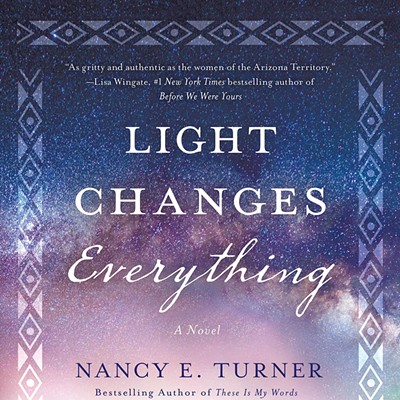John Duncklee's Bull by the Tale offers stories that take place between the Spanish colonial era and present day in the Southwestern United States and Northern Mexico. Six out of the eight stories are very well written--but the first story of the book does not greet its readers. Instead, it asks, "Do you really want to continue on?"
"The Developers" is a story without its own personality. Its boring archetypal characters trudge through the theme of premarital pregnancy. For some reason, the back of the book brags about the similarities between this story and another in Duncklee's collection, "Padre Mirandi." That story has the same plotline but is set in a different time period, is crafted more smoothly and features characters who were not translucent. Why does Duncklee need to repeat the same story with a different time period adhered to it? This is a hard question to answer without being discourteous.
Another example of his use of redundant archetypes and plotline is "The Mines of Magdalena," which is about two con artists who get conned. This story has a plotline that is among the most overused in Hollywood today, and is similar to two other stories in the book about mines and property ownership.
Let's change gears now and discuss the rest of the book's tales, which turn the tables on those gritty unmentionables. These stories carry a human quality that lures the reader in with its personable rhetoric and keep the reader up past their bedtime finishing them. The stories are descriptive enough to truly paint a picture of the surroundings and characters; the reader becomes an onlooker in these stories. This is Duncklee's 13th book, and it's plain to see that his knowledge of the craft of writing is alive and well.
Duncklee, a native of New Mexico, weaves in his own personal experiences and endeavors throughout these Western tales. His bio proudly boasts that his jobs have included cattle rancher, quarter-horse breeder and designer of mesquite wood furniture; he was in the Navy during the Korean War. The struggle of the working class is proudly depicted throughout most of this book.
In "Two Gold Coins," two young best friends embark on a journey that will take them all the way from their fishing village in Spain to Sonora as they deal with the trials and tribulations of love and war while fighting against the Apache in 1752. "Soul of the Hob-Nailed Boot" uses a simpler approach, starring a single main character who fights to keep his property from being taken away. "Antonio Sings His Songs" takes the reader along on a sentimental adventure as a migrant worker makes a pilgrimage from Tinaja Verde, Mexico, to the United States and back, all for the good of his family. The book ends with a bang as all of your favorite Western heroes and villains make a "yarn-weaving" visit to the current tourist town of Tombstone in "The Last Breakfast."
Bull by the Tale is a jar of mixed nuts. Most of the stories are brilliant, with the language and the themes easily digested, but the problems with structure and redundant plots are a big stone for the reader to pull.
For those who read short-story books in no particular order, this is the book for you. For those who read books from start to finish, you might want to just skip the first story; otherwise, the book may end up on the shelf, with the brightest parts of the book never enjoyed.








